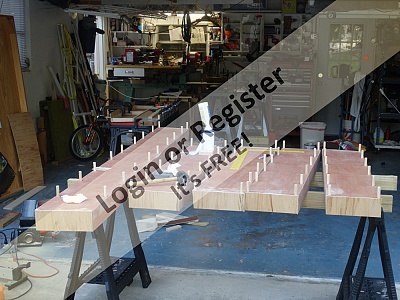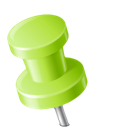|||
|
|
🗝 Login
🤖 Create Account
Main Menu
🚤 Model Boats
• Forum
• Build Blogs
• Media Gallery
• Boat Clubs & Lakes
• Events
• Boat Harbour
• How-To Articles
• Plans & Docs
• Useful Links
• The Games Chest
This Website
🔍 Search
📝 Guestbook
👨👩👧👦 Members (1,786)
📖 Quick Site Guide
📣 Support
👥 Membership
Hobby Supplies
🛍️ Online Shop
Not Registered
Go AD FREE & get your membership medal
BRONZE
Less Ads
SILVER
GOLD
Ad Free
Cancel
Anytime
Anytime
£2.50
£4.50
£6.50
Subscribe
Go AD FREE & get your membership medal
BRONZE
Less Ads
SILVER
GOLD
Ad Free
For A Whole Year!
£25
£45
£65
Donate
You Will Be Helping Towards:
Domain Fees
Security Certificates
iOS & Android App Fees
Website Hosting
Fast Servers
Data Backups
Upkeep & Maintenance
Administration Costs
Without your support the website wouldn't be what it is today.
Please consider donating towards these fees to help keep us afloat.
Read more
All donations are securely managed through PayPal.
Many thanks for your kind support
Without your support the website wouldn't be what it is today.
Please consider donating towards these fees to help keep us afloat.
Read more
All donations are securely managed through PayPal.
Many thanks for your kind support
Model Boats Website
Home
Forum
Build Blogs
Media Gallery
Boat Clubs & Lakes
Events
Boat Harbour
How-To Articles
Plans & Docs
Useful Links
The Games Chest
Login To
Remove Ads
Remove Ads
Trending Now
Blog
Re: Tied to the dock.
Lew, how do you keep vessels from floating around after being run? Or do these get retrieved and only keep pre-tied models at the wharf for public viewing?
🇨🇦 Ronald

18 minutes ago
Harbour
Fairmount Alpine
Purchased Built
🇬🇧 Heners2332

2 hours ago
Forum
Before and after..
Looking good! I think scale sail boats are great. The Down side (here in Florida) is the wind. Either too much or not enough putting them in "chains". Mine does well on the shelf.
Lew
🇺🇸 LewZ

3 hours ago
Blog
Re: Need info on what these ships are
Hi!
the schooner
Yes, SIR WINSTON CHURCHILL (with MALCOLM MILLER)
🇨🇦 RossM

9 hours ago
Forum
Animal and nature photos to enjoy.
Wolfe, isn’t Google Earth amazing!
May this Third Advent be special for you too. PEACE. God offers us peace with Him through His Son Jesus Christ. He did the work - and invites us to follow Him in being peacemakers too.
🇨🇦 Ronald

9 hours ago
Blog
Re: She’s done!!
Hi, 4 years later I’ve got a question.
What battery did she have? Thinking of building one and need to know what is best to buy.
Thanks
🇬🇧 Heners2332

9 hours ago
Blog
Re: A bit more final finishing.
Thank you Phil. The boat will go to Florida with the builder who escapes the New England winters for three months. In the past my wife & I enjoyed the snow & winter sports but age caught up with us so skiing is no longer an option.
As mentioned earlier in this thread I usually do the maiden voyage early in the build. But rehabbing from knee surgery prevented that. So I will use the large test tank ( the condo association’s pool) for the first splash. Thus the crossed fingers.
🇺🇸 Chum444

10 hours ago
Forum
Question of the Day?
I was tossing up between A & D, but went for D. Didin't trust D with whats going on in the world at the moment ( with Russia??), plus I normally plumb for the longest answer.
Which is what I done in the end.Lucky I did and it was the correct answer.
🇬🇧 BOATSHED

13 hours ago
Blog
Re: Planking the deck. Part 1.
Hi Ronald.
"Are the planks of the upper decks to be the same width as the lower deck planks?"
Yes, they will also be 1.6 x 6.5mm lime wood with .5mm black caulking lines and a high gloss epoxy resin finish.
Rob.
🇬🇧 robbob

1 day ago
Harbour
Re: Port Area
Good Morning Lew,
Stackable . . I don't have that at home, but I found a small corner in the basement.
Much to my wife's chagrin . . but somehow we always come up with good ideas together. She thinks very practically, which she cultivates and practices in the household.
Well, sometimes I look for something again because she moved it or stored it to save space.
You see, Lew, even at my age, I'm still learning from a wife who is 10 years younger than me!
Your Michel-C.
🇨🇭 Mike Stoney

2 days ago
Gallery
Re: Christmas theme
Hi Garth,
That's great, Love the Christmas decorations.
is that the naughty elf in the boat.
Hope he'smnot taking with out consent.
Out of curiosity, what model boat is that??
🇬🇧 BOATSHED

2 days ago
Guestbook
Re: Guestbook
Am still around & kicking in the Middle Kingdom but saddled with other tasks at the moment so hobbies, sadly, as taking a lower priority nowadays.
🇨🇳 Chuck

2 days ago
Blog
Re: HMCS Woodstock Crew From Etsy 3Djson
Good grieve! Seems like a lot of wasted material. Did you then cut and file the excess material off ? After the material is removed are the figures nicely detailed?
🇨🇦 Ronald

2 days ago
Forum
TVR1A Steam Engine.
A little more progress on the building front, and a few more decisions made with regards to exactly what I am trying to accomplish. So we now have planked decks front and rear of the engine, and maybe timber box grating around the engine. I have decided to cover up the servo at the side of the engine, so the full metal jacket now has a wooden over coat. I have also made a start on the pipe work and some serious silver soldering. Fluxed rods or easy-flow, that is the question? I have made a Windemere steam kettle, which will be fed from the bottom of the sight glass fitting, and it will be moved from its temporary location on the servo cover. Regards, Gary.
🇬🇧 GaryLC

4 days ago
Gallery
Re: SSMBC (Seminole, Florida) meet, Nov. 2, 2025
Hei Lew!
What a pond! We would love to have something like that, but the local council is thwarting our plans.
We wanted a little more inflow water, but even rainwater was not allowed. It could have been taken from the neighbouring houses at little expense and with little effort.
Let's see what happens...
There used to be three ponds for the mill further down. Unfortunately, the mills burned down completely in 1915. Oh well...
Greetings from Switzerland
Michel-C.
🇨🇭 Mike Stoney

4 days ago
Blog
Re: Seaspan HAWK with "Z" drive build
Graupner "Z" drive Astro flight geared motors
🇺🇸 bruce1946

4 days ago
|
New Member
United Kingdom
 EsterP
EsterP5 hours ago
New Member
United Kingdom
 IanR1
IanR110 hours ago
New Member
United Kingdom
 Heners2332
Heners233215 hours ago
New Member
Germany
 WalterB
WalterB1 day ago
New Member
Canada
 WallaceG
WallaceG1 day ago
New Member
United Kingdom
 PeterG5
PeterG51 day ago
New Member
Bermuda
 JonandSusanT
JonandSusanT2 days ago
New Member
United Kingdom
 MR H 17
MR H 172 days ago
New Member
United Kingdom
 davef
davef2 days ago
Birthday This Week
Turns 65
 Hook
Hook4 days ago
Birthday This Week
Turns 68
 MouldBuilder
MouldBuilder4 days ago
New Member
United Kingdom
 ShaunS
ShaunS4 days ago
Birthday This Week
Turns 74
 JEANFRANCOIS G
JEANFRANCOIS G5 days ago
New Member
Bermuda
 ArnoldP
ArnoldP5 days ago
New Member
Germany
 PeterW2
PeterW26 days ago
Birthday This Week
Turns 68
 Oxford-Dave
Oxford-Dave6 days ago
New Member
United Kingdom
 RoyB1
RoyB16 days ago
New Member
Denmark
 Arly
Arly7 days ago
New Member
United Kingdom
 PatrickB1
PatrickB17 days ago
New Member
United States
 John L
John L7 days ago
New Member
United Kingdom
 NigelP1
NigelP17 days ago
New Member
United Kingdom
 Bigun
Bigun9 days ago
New Member
Canada
 philipG
philipG9 days ago
New Member
United Kingdom
 PhilipP1
PhilipP19 days ago
New Promotion
Fleet Admiral
 roycv
roycv9 days ago
New Promotion
Chief Petty Officer 1st Class
 Steves-s
Steves-s10 days ago
New Promotion
Able Seaman
 Dutton73
Dutton7310 days ago
New Promotion
Chief Petty Officer 2nd Class
 thadlietz
thadlietz11 days ago
New Member
United Kingdom
 Dutton73
Dutton7311 days ago
New Member
United Kingdom
 JohnF5
JohnF511 days ago
New Member
United Kingdom
 JimD1
JimD112 days ago
New Member
United States
 mtnmnstr
mtnmnstr13 days ago
New Member
United States
 WarrenJ
WarrenJ13 days ago
New Member
United Kingdom
 sharpe
sharpe13 days ago
Account Updated
Changed Avatar
 PEI
PEI13 days ago
Account Updated
Updated 'About Me'
 PhilH
PhilH14 days ago
Birthday This Week
Turns 71
 MikeN12
MikeN1214 days ago
New Member
United Kingdom
 NickZ
NickZ15 days ago
Account Updated
Changed Avatar
 ChrisF
ChrisF15 days ago
New Member
United Kingdom
 AndrewD1
AndrewD116 days ago
New Member
United States
 DavidW8
DavidW816 days ago
New Member
Greece
 marligkg
marligkg16 days ago
New Promotion
Vice Admiral
 zooma
zooma16 days ago
New Member
United States
 NedR
NedR17 days ago
New Promotion
Able Seaman
 Jshander
Jshander17 days ago
New Promotion
Master Seaman
 ColinJ2
ColinJ218 days ago
Birthday This Week
Turns 78
 JockScott
JockScott18 days ago
New Promotion
Captain
 EdW
EdW19 days ago
See More
Forum Topics
Before and after..
Looking good! I think scale sail boats are great. The Down side (here in Florida) is the wind. Either too much or not enough putting them in "chains". Mine does well on the shelf.
Lew
3 hours ago by 🇺🇸 LewZ ( Vice Admiral)
Vice Admiral)
 Vice Admiral)
Vice Admiral)
Hobby Chit Chat
3 Posts
19 Likes
19 Likes
Started
12 hours ago
by Peter s
12 hours ago
by Peter s
Latest
3 hours ago
by LewZ
3 hours ago
by LewZ
Animal and nature photos to enjoy.
Wolfe, isn’t Google Earth amazing!
May this Third Advent be special for you too. PEACE. God offers us peace with Him through His Son Jesus Christ. He did the work - and invites us to follow Him in being peacemakers too.
9 hours ago by 🇨🇦 Ronald ( Fleet Admiral)
Fleet Admiral)
 Fleet Admiral)
Fleet Admiral)
Non-Hobby Chat
245 Posts
1619 Likes
1619 Likes
Started
2 years ago
by Wolle
2 years ago
by Wolle
Latest
9 hours ago
by Ronald
9 hours ago
by Ronald
Question of the Day?
I was tossing up between A & D, but went for D. Didin't trust D with whats going on in the world at the moment ( with Russia??), plus I normally plumb for the longest answer.
Which is what I done in the end.Lucky I did and it was the correct answer.
13 hours ago by 🇬🇧 BOATSHED ( Commander)
Commander)
 Commander)
Commander)
Website Related
5273 Posts
13322 Likes
13322 Likes
Started
3 years ago
by fireboat
3 years ago
by fireboat
Latest
13 hours ago
by BOATSHED
13 hours ago
by BOATSHED
TVR1A Steam Engine.
A little more progress on the building front, and a few more decisions made with regards to exactly what I am trying to accomplish. So we now have planked decks front and rear of the engine, and maybe timber box grating around the engine. I have decided to cover up the servo at the side of the engine, so the full metal jacket now has a wooden over coat. I have also made a start on the pipe work and some serious silver soldering. Fluxed rods or easy-flow, that is the question? I have made a Windemere steam kettle, which will be fed from the bottom of the sight glass fitting, and it will be moved from its temporary location on the servo cover. Regards, Gary.
4 days ago by 🇬🇧 GaryLC ( Captain)
Captain)
 Captain)
Captain)
Building Related
15 Posts
89 Likes
89 Likes
Started
20 days ago
by GaryLC
20 days ago
by GaryLC
Latest
4 days ago
by GaryLC
4 days ago
by GaryLC
engine etc etc
Hi Bob, many thanks for this information, very much appreciated.
5 days ago by 🇬🇧 Guy O ( Recruit)
Recruit)
 Recruit)
Recruit)
RC & Electrics
3 Posts
6 Likes
6 Likes
Started
6 days ago
by Guy O
6 days ago
by Guy O
Latest
5 days ago
by Guy O
5 days ago
by Guy O
|
|
Login To
Remove Ads
Remove Ads
Build Blogs
3 Posts
6 Followers
12 Likes
"Port Seminole" a SSMBC portable dock system for R/C model boats
Episode: Introduction
This is series of episodes will be about the features and updates of the SSMBC (Tampa Bay Area, Florida) Portable Dock System (PDS) I will post information on the original design and build of the PDS as well as requirements of have a PDS for the SSMBC.
First is why. Operating (R/C) model boats are fun to build and run. But take that to the next level. How do we improve that? We have a pond, OK? We have a floating dock for launching and retrieval; Nice. Every once and a while we have a few buoys (markers); Getting a little better. Now comes docks! Wow, how many of you "captains" out there would like to maneuver through a docking system? I know I like it. (Think it we ignite some of our casual members to come or entice new members to join?)
In March of 2014 I built most of the PDS with my son's help. There we no videos or even instructions on how to build a PDS back then. Only a few photos and videos that showed little to no detail on they were built.
It was fun to operate the boats but what a headache to setup for our two hour meets. Trudging through thick mud on the ponds bottom was very difficult. Trying to flat the sections out and attach them together while leaning over the docks edge was still an issue. ("No swimming".)
Thought: Why not assemble them on land gradually pushing them into the pond? How about a better way to attach them to the shore? I already made them stackable to ease storage and transport.
And that folks is where I am today. Most of the thinking was done. Now I am in the update phase. For two days (I'm 81, not as fast as I used to be) I have been not only updating the PDS but doing some badly need maintenance and strengthening.
The photos I am posting now are the original build of the PDS. They are simplistic, no additional details. (Some details may be added later.) You can see that the sections can be positioned for a variety of configurations.
In upcoming episodes I will add more information and photos. so others can see what we have done. Nothing hidden, all information. And, of course, suggestions are welcomed.
Lew
SSMBC event coordinator
🇺🇸 LewZ

3 hours ago



















26 Posts
9 Followers
163 Likes
Lindsay M a scratch built Wasque 26 ft
Awaiting graphics to finish off THUNDER& METEOR so pulled this one off the shelf to resume the build. I’ll start at the beginning posting highlights so as not to take up too much time.
Photo 1&2 One of the many real boats. These are iconic around Cape Cod, Martha’s Vineyard, Nantucket, & other Atlantic bordering states.
Photo 3 Starting the frame & keel.
🇺🇸 Chum444

1 day ago



















23 Posts
23 Followers
288 Likes
The VMW Marlin Cabin Cruiser by Robbob
The VMW Marlin Cabin Cruiser by Robbob
Preface.
At the time of writing, I’ve had the construction of this boat on ‘the back burner’ since July 2022. By then I had spent about two months on and off constructing the boat to a stage where I could consider applying a glassfibre cloth and epoxy finish to the hull. However I couldn’t spend any more time on the Marlin project as I had a more important project to undertake, which was to paint, decorate, refurbish and prepare our house for sale so that we could downsize and move to a new area now that our kids had all fled the nest.
Fast forward to today (mid-April 2025) and it’s taken a while to get the new house and gardens into shape and settle in, with the emphasis on converting my internal garage into a great new workshop, I can finally pick up from where I left off.
Introduction to the kit.
This new model is the latest undertaking by Vintage Model Works, now famous for their very popular models of the RAF Crash Rescue Tender and Thames River Police Boat kits which are based on old Aerokits and Veron designs.
The Marlin is a re-working of an original Veron design by the late Phil Smith in 1953. His son Colin Smith, who was also responsible for the re-design of the Thames River Police Boat, has made some changes to his father’s design to take advantage of more modern materials and production methods such as CNC and laser cutting.
The photograph below is of a prototype built by Colin Smith to give you an idea of how the boat looks in finished form. And there is also a review of the Marlin that appeared in Model Maker magazine, November 1953.
The size remains at 36” and it employs the same construction method as the original. The spacious cabins of the boat makes it very easy to accommodate all the latest control hardware required, not that the original was lacking in that area even when the radio systems used valves and large batteries and the propulsion was usually IC or a large electric motor.
Even the pre-production sample the Vintage Model Works kit supplied to me is well presented with a full size drawing including a pictorial construction sequence and separate pages of building instructions.
All the required materials are supplied in quality ply, balsa, strip-wood and dowel including clear plastic sheets for the windscreens, and various white metal deck fittings. The builder is of course required to supply their own adhesives and paint of choice, as well as the propulsion, drive train and radio control gear. In the latter respect I will likely restrict control to throttle and rudder and not add any lighting or other features. That has already been done magnificently by Mike Turpin.
Construction.
As with the Thames river police boat, another Veron design, construction starts with the assembly of a box structure onto which formers and bulkheads are attached to make the basic hull shape.
I will be tackling this in the first part of my build blog which I hope you will enjoy following and I encourage you to ask questions, leave comments and hopefully some ‘likes’ as I make progress.
Robbob.
🇬🇧 robbob

1 day ago



















2 Posts
4 Followers
12 Likes
Need info on what these ships are
My Uncle in NY passed away a few months ago. He was 96 n a model builder since a kid. He got me into it n we both were in the Navy. At one time he was my boss on a minesweeper. I inherited some of the ships he built. One is the last he worked on I will complete. Another is the same one I built n lost in a fire a Sterling Scout. The tall ships I have no info on n would like if anyone recognizes them? I will sell them as they are complete n all are display ships. I may RC the Hercules tugboat as it’s the unfinished one. His grankids bought it for him at price of $500. He still has more at his house the Robert e Lee, two rear paddle wheels and several multicast sailing ships. Here are pics I took of the four I have brought home.
🇺🇸 Hhager2

2 days ago













11 Posts
6 Followers
60 Likes
HMCS Woodstock from a Kitbashed Revell Flower Class Corvette
Starting the dig into the Ottawa Archives and The Great Lakes Museum in Kingston:
🇨🇦 RPLedm

3 days ago



















6 Posts
7 Followers
22 Likes
Another Pusher Tug
While doing research for my Springer/Pusher tug I discovered these drawings David Metcalf’s Motorflot Pusher Tug and I had all the materials to build it so I put the other pusher I am building aside and started on this one. I am easily distracted
All the hull parts have been cut out one after yesterdays power outage, I will stat the assembly today.
Pictures to follow.
🇬🇧 EdW

6 days ago











1 Post
5 Followers
19 Likes
Seaspan HAWK with "Z" drive build
Progress on my Seaspan Hawk. this boat was just the hull and deck, with 2 Z drive motors. Everything from the deck up was destroyed. the drawing I could find had lines that were 1/8" thick so trying to get everything in proportion was interesting and challenging. it has been a fun build and challenged my old mind.
🇺🇸 bruce1946

6 days ago



















2 Posts
6 Followers
22 Likes
M. N. Golo, 1300 Tonne Coastal Freighter
This might be my next Build. Note that the 3inch gun is positioned right above the toilet. Do you think they yell "CLEAR" down into the toilet. Do customers "evacuate" when it goes off? Do their toe nails scratch through the linoleum?
🇨🇦 RPLedm

9 days ago


4 Posts
2 Followers
22 Likes
Chris-Craft Style
I think I mentioned this model on another blog.And now it's become a Build Blog. So here we go. This model required a battery box, so I had to make some modifications.So a few cuts were required to find a spot for a 7.2-volt NMH battery so see some photos.
🇨🇦 GARTH

11 days ago











1 Post
2 Followers
12 Likes
Vintage sea scout ?
Hi I’ve just bought a secondhand model wooden boat looks like an aero kit sea scout 24.5 inches long it has a very old made in Japan electric motor it smells old inside the boat and the paint is heavily crazed .i would like to know my about it / age etc if anyone could help me before I restore it many thanks Kraig. it also has a manual brass rudder knob it the back
🇬🇧 Dutton73

11 days ago






3 Posts
2 Followers
28 Likes
GLYNN GUEST KNOCKER WHITE TUG
I mentioned in the Vic Smeed Vivacity forum I would do a few smaller builds while chugging through the Vivacity project; the first of these I have started (while waiting on certain components/materials for Vivacity), based on Glynn Guest's Knocker White tugboat plan from his book 'Small Radio Control Boats'.
The Driving force behind choosing this particular design was the fact I had just filled my Backyard Model Boating Pond for the first time and sailed a couple of small free-running boats in it.
I had already made Arcady and Bredette many years ago when they were first issued as free plans in Model Boats, so Knocker White was the next project from the book with the necessary compact dimensions to sail happily on my pond, the first of (hopefully) several small such boat projects.
Here are the first stages of the build shown in the photos;
1) Paper template traced/assembled from the book - a little 'guestimation' was required as the plan was over two pages that didn't quite align...
2)Carcass pieces (deck, bottom, bulkheads, stem) marked out on 1/4" sheet
3)Carcass pieces cut out
4 & 5) carcass glued together, care taken to get as square as possible - note extra piece placed in stern to support rudder tube, making stern slightly deeper than original
6)Power train/RC components; Specktrum 410 RX, Ali Express 20A esc, RS 280 motor (was eventually replaced with an RS260 type when I clumsily broke off one of the contacts while trying to fit the battery), 100mm prop shaft/tube assembly with 25mm 3-blade prop.
7)Power train set up & tested on the bench to ensure everything worked
8)Prop tube skeg/support added
9)Prop tube epoxied in place, sandwiched between skeg support and lower skeg piece.
10)6mm ply motor mount glued into position after checking alignment.
More pics and comments to follow soon,
Best regards to all following this,
Nick
🇳🇿 Nick Ward

13 days ago



















1 Post
1 Follower
12 Likes
1930 Cris Craft Runabout Dumas Kit 1230
Started the Runabout.
Using my Lion Miter trimmer to cut the planks, and my block plane to
trim to the chine. Then a sanding block for the final fit.
🇺🇸 pressonreguardless

15 days ago





|
|
Media Gallery
Christmas theme
5 days ago by GARTH
SSMBC (Florida) meet: 12/7/2025 military focus
7 days ago by LewZ
SSMBC (Seminole, Florida) meet, Nov 16, 2025
28 days ago by LewZ
SSMBC (Seminole, Florida) meet, Nov. 2, 2025
1 month ago by LewZ
Spooky - (Evening sail November)
1 month ago by philcaretaker
Gaff Rigged Bristol Pilot Cutter Autumn / Fall
2 months ago by philcaretaker
Only 2 days left
2 months ago by GARTH
Professional Photographer at Southport
2 months ago by SouthportPat
Filming over water
2 months ago by philcaretaker
"Sailor Sam" greets onlookers at the Sunday morning "Run In The Park".
3 months ago by philcaretaker
Light up the Night on the September 25th 2025 including safety cautions
3 months ago by GARTH
Second navigation (4 September 2025) to Lake Turano.
3 months ago by AlessandroSPQR
|
|
Login To
Remove Ads
Remove Ads
Boat Clubs & Lakes
Recent Updates In Places

|
Buxton Model Boat Club
15 days ago by 🇬🇧 philcaretaker (
 Commodore) Commodore) |

|
Schiffsmodellclub Sömmerda/OT leubingen
19 days ago by 🇨🇭 Mike Stoney (
 Rear Admiral) Rear Admiral) |

|
Southport Model Boat Club
1 month ago by 🇬🇧 SouthportPat (
 Commodore) Commodore) |

|
BUXTON MODEL BOAT CLUB
1 month ago by 🇬🇧 philcaretaker (
 Commodore) Commodore) |

|
New Brighton Model Boat Club
2 months ago by 🇬🇧 zooma (
 Vice Admiral) Vice Admiral) |
|
|
Upcoming Events
|
(No Upcoming Events)
|
Boat Harbour
0 Photos
0 Likes
Fairmount Alpine
Purchased Built
🇬🇧 Heners2332

2 hours ago
6 Attributes
1 Comment
1 Photo
4 Likes
Schaufahren
Schaufahren des Schleppers "Smith"
🇩🇪 BernhardP

21 days ago
0 Attributes
1 Comment
1 Photo
4 Likes
Sumpfboot
Das Sumpfboot mußte mal sein. Fährt sehr stabil durch eine 15mm große Heckflosse.
🇩🇪 BernhardP

21 days ago
0 Attributes
5 Comments
1 Photo
4 Likes
Ponton
Der Ponton ist für den Hafenschlepper.
🇩🇪 BernhardP

21 days ago
0 Attributes
1 Comment
1 Photo
3 Likes
Regattaklasse
M-Boot kurz vor dem Start zur Regatta in unserem Verein.
🇩🇪 BernhardP

21 days ago
0 Attributes
1 Comment
1 Photo
2 Likes
Rennboot
Sehr schönes und schnelles Rennboot.
🇩🇪 BernhardP

21 days ago
0 Attributes
1 Comment
1 Photo
9 Likes
Yacht
Modell "Destriro"
🇩🇪 BernhardP

21 days ago
0 Attributes
3 Comments
1 Photo
8 Likes
Fahrmodell
Revell Gato-Class als Fahrmodell.
🇩🇪 BernhardP

21 days ago
0 Attributes
1 Comment
1 Photo
8 Likes
Hafenschlepper
smith nederland
🇩🇪 BernhardP

21 days ago
0 Attributes
2 Comments
|
|
How-To Articles
Electric Boat Engine Etc Etc
Revised 6 days ago
By Guy O
Essential or useful tools and utensils for the ship modeler. A final appendix lists the most common
Revised 2 months ago
By AlessandroSPQR
stop email notifications
Revised 2 months ago
By Ace23
painting epoxy over Humbrol and varnish enamels
Revised 4 months ago
By roycv
Cardan joint, Homokinetic joint, universal joint. Problems related to the junction between the engin
Revised 6 months ago
By AlessandroSPQR
various electrical connection diagrams for two motors
Revised 8 months ago
By tomarack
Lifeboats or work boats?
Revised 11 months ago
By AlessandroSPQR
Permanent magnet brushed electric motors. Main features. Basic elements of distinction. How to evalu
Revised 11 months ago
By AlessandroSPQR
When wooden planking the sides of hulls What Glues are you using?
Revised 1 year ago
By bruce1946
Fibreglassing a wooden hull
Revised 1 year ago
By DuncanP
|
|
Login To
Remove Ads
Remove Ads
Model Boats Website
This is the alert text. You can customize this text to be as long or short as needed. The modal height will adjust accordingly.
🛍️ Basket
Go AD FREE & get your membership medal
BRONZE
Less Ads
SILVER
GOLD
Ad Free
Cancel
Anytime
Anytime
£2.50
£4.50
£6.50
Subscribe
Main menu transported here on mobile
Login
Create New Account
Trending Topics
Members Online
Blog
Re: Tied to the dock.
Ronald
18 minutes ago
Harbour
Fairmount Alpine
Heners2332
2 hours ago
Forum
Before and after..
LewZ
3 hours ago
Blog
Re: Need info on what these ships are
RossM
9 hours ago
Forum
Animal and nature photos to enjoy.
Ronald
9 hours ago
Blog
Re: She’s done!!
Heners2332
9 hours ago
Blog
Re: A bit more final finishing.
Chum444
10 hours ago
Forum
Question of the Day?
BOATSHED
13 hours ago
Blog
Re: Planking the deck. Part 1.
robbob
1 day ago
Harbour
Re: Port Area
Mike Stoney
2 days ago
Gallery
Re: Christmas theme
BOATSHED
2 days ago
Guestbook
Re: Guestbook
Chuck
2 days ago
Blog
Re: HMCS Woodstock Crew From Etsy 3Djson
Ronald
2 days ago
Forum
TVR1A Steam Engine.
GaryLC
4 days ago
Gallery
Re: SSMBC (Seminole, Florida) meet, Nov. 2, 2025
Mike Stoney
4 days ago
Blog
Re: Seaspan HAWK with "Z" drive build
bruce1946
4 days ago
Forum
engine etc etc
Guy O
5 days ago
Forum
Dutch sailing barge
AlessandroSPQR
5 days ago
Forum
RTTL2755 having a run out
AlessandroSPQR
5 days ago
Blog
Re: Look I’m aiming for
Rogal118
5 days ago
Forum
Sprite
zooma
5 days ago
Gallery
Re: SSMBC (Florida) meet: 12/7/2025 military focus
Chum444
5 days ago
Forum
WW 2 and radar
roycv
6 days ago
Forum
Nautical Nonsense: Cutlass Stand
LewZ
6 days ago
Wiki
Electric Boat Engine Etc Etc
Guy O
6 days ago
Gallery
Re: SSMBC (Seminole, Florida) meet, Nov 16, 2025
LewZ
7 days ago
Blog
Re: Classic Model Power Boats
BOATSHED
7 days ago
Blog
Re: Crew for next Project From Etsy 3djson
AlessandroSPQR
7 days ago
roycv
Fleet Admiral
10,065 Points
0 seconds ago

DWBrinkman
Commodore
4,340 Points
33 seconds ago

BOATSHED
Commander
2,715 Points
58 seconds ago

melian
Recruit
0 Points
2 minutes ago

TonyAsh
Chief Petty Officer 1st Class
456 Points
13 minutes ago

zooma
Vice Admiral
6,169 Points
15 minutes ago

JockScott
Warrant Officer
720 Points
16 minutes ago

Ronald
Fleet Admiral
12,761 Points
17 minutes ago

bruce1946
Midshipman
1,193 Points
29 minutes ago

neilmc
Warrant Officer
886 Points
40 minutes ago

LeeA
Recruit
10 Points
40 minutes ago

ekoral
Master Seaman
128 Points
44 minutes ago

RodC
Lieutenant Commander
2,122 Points
44 minutes ago

Javelin1
Recruit
5 Points
46 minutes ago

Chum444
Captain
3,877 Points
1 hour ago

RubaDub
Petty Officer 1st Class
239 Points
1 hour ago

eddyc
Recruit
6 Points
2 hours ago

RonB
Recruit
0 Points
2 hours ago

thadlietz
Chief Petty Officer 2nd Class
308 Points
2 hours ago

Hermione
Able Seaman
49 Points
2 hours ago

Heners2332
Recruit
11 Points
2 hours ago

Wolle
Commodore
4,857 Points
2 hours ago

Greg
Recruit
0 Points
2 hours ago

LewZ
Vice Admiral
7,115 Points
2 hours ago

RossM
Captain
3,166 Points
3 hours ago

EdwardG1
Recruit
0 Points
3 hours ago

pressonreguardless
Rear Admiral
5,307 Points
3 hours ago

Rowen
Captain
3,547 Points
3 hours ago

dash8man
Able Seaman
33 Points
3 hours ago

Northernflotsam
Chief Petty Officer 2nd Class
324 Points
3 hours ago

PeterJ
Chief Petty Officer 1st Class
470 Points
3 hours ago

Mike Stoney
Rear Admiral
5,268 Points
3 hours ago

xtramaths
Petty Officer 2nd Class
174 Points
3 hours ago

Oxford-Dave
Sub-Lieutenant
1,303 Points
4 hours ago

BernardB
Recruit
2 Points
4 hours ago

Newby7
Fleet Admiral
10,878 Points
4 hours ago

JEANFRANCOIS G
Recruit
0 Points
4 hours ago

trowley
Recruit
0 Points
4 hours ago

glassicus
Recruit
6 Points
4 hours ago

BarryS
Warrant Officer
836 Points
4 hours ago

hermank
Rear Admiral
5,260 Points
5 hours ago

Steves-s
Chief Petty Officer 1st Class
454 Points
5 hours ago

JOHN
Midshipman
1,136 Points
5 hours ago

KevinH
Warrant Officer
837 Points
5 hours ago

J23ARB
Recruit
0 Points
5 hours ago

jumpugly
Admiral
8,389 Points
5 hours ago

EsterP
Recruit
0 Points
5 hours ago

Otto
Recruit
10 Points
6 hours ago

Julio
Petty Officer 1st Class
249 Points
6 hours ago

Sinc5508
Able Seaman
21 Points
6 hours ago

Login To
Remove Ads
Remove Ads

🏠
Home
Home
📰
Trending
Trending
💬
Forum
Forum
🗝
Login / Join
Login / Join
|
Cookies are used for ads personalisation.
By using this website you agree to our use of cookies. More Info |
Main Menu
🚤 Model Boats
• Forum
• Build Blogs
• Media Gallery
• Boat Clubs & Lakes
• Events
• Boat Harbour
• How-To Articles
• Useful Links
• The Games Chest
This Website
🔍 Search
📝 Guestbook
👨👩👧👦 Members (1,786)
📣 Support
Hobby Supplies
🛍️ Online Shop
Login
🗝 Login
🗝 Create New Account
▼
Media Gallery
X
1 of 4
► |
◄ |
Media Viewer
^
_
X
Share
X
Flag Inappropriate Post
X
| Select Reason | |
| Sexual content Includes graphic sexual activity, nudity, and other sexual content. | |
| Violent or repulsive content Violent or graphic content, or content posted to shock viewers. | |
| Hateful or abusive content Content that promotes hatred against protected groups, abuses vulnerable individuals, or engages in cyberbullying. | |
| Harmful dangerous acts Content that includes acts that may result in physical harm. | |
| Child abuse Content that includes sexual, predatory or abusive communications towards minors. | |
| Promotes terrorism Content intended to recruit for terrorist organisations, incite violence, glorify terrorist attacks, or otherwise promote acts of terrorism. | |
| Spam or misleading Content that is massively posted or otherwise misleading in nature. | |
| Infringes my rights Privacy, copyright and other legal complaints. | |
Basket Updated
X
Loading...
Loading
Loading Uploader...










